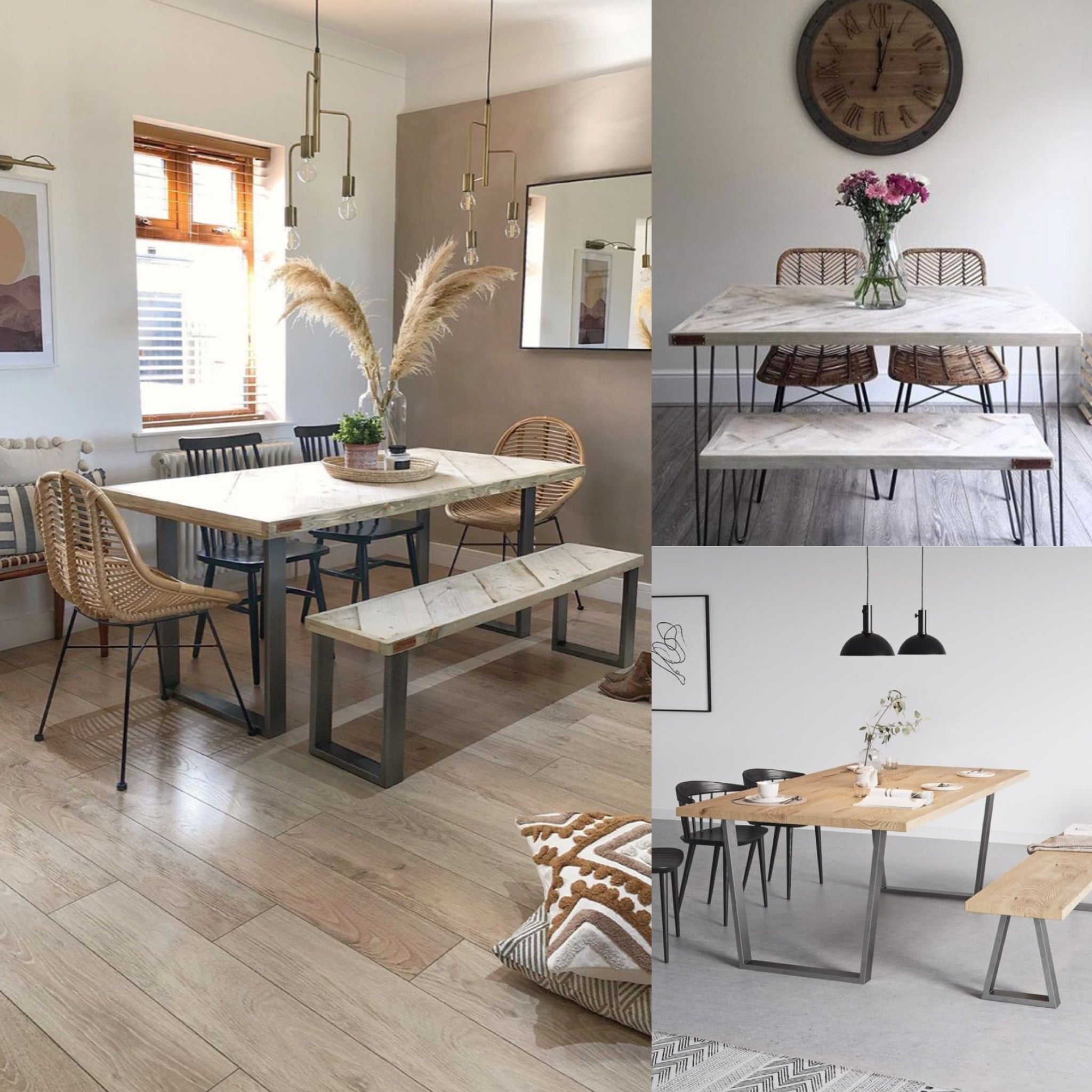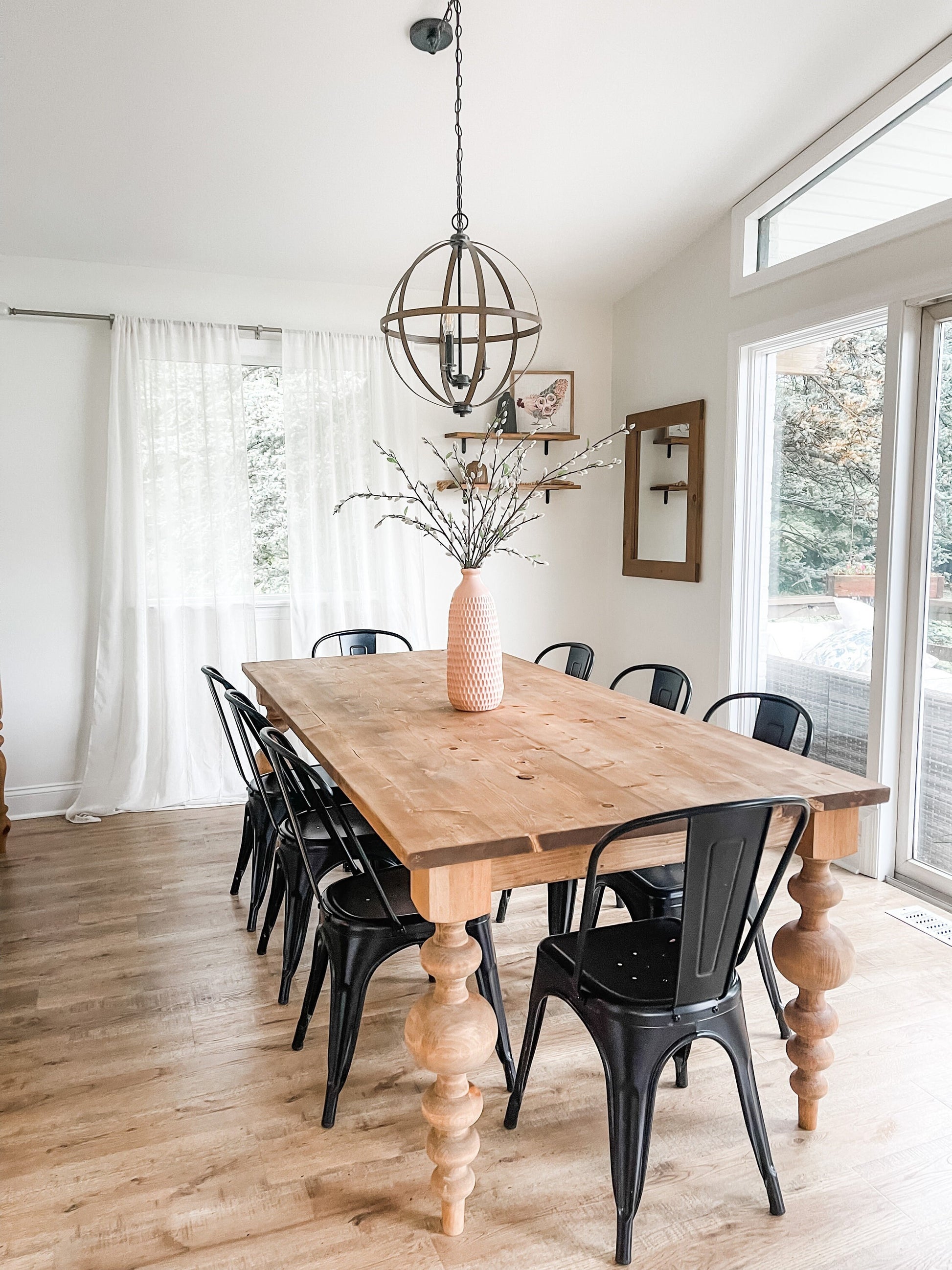Tips for Installing Dining Room Table Legs for a Modern Look
Tips for Installing Dining Room Table Legs for a Modern Look
Blog Article
From Typical to Modern: Find the Ideal Dining-room Table Legs for Your Style
The choice of eating space table legs plays a critical role in specifying the overall personality of your area, bridging the void between traditional workmanship and contemporary aesthetic appeals. While classic layouts such as cabriole and turned legs stimulate a sense of timeless class, contemporary designs like hairpin and geometric alternatives provide an opportunity for striking aesthetic rate of interest. Evaluating the appropriate balance in between these styles requires a nuanced understanding of your existing decor and personal preference. As you consider these components, the question stays: just how can you perfectly incorporate these diverse leg designs to develop a harmonious eating experience?
Comprehending Table Leg Styles
The range of eating area table leg designs can dramatically affect both the visual appeals and performance of the area. Each leg design contributes one-of-a-kind aesthetic aspects and sensible attributes, providing to varied style choices and usage demands. Comprehending these styles is vital for picking the ideal table that lines up with your general interior design vision.
For instance, conical legs supply a tidy, traditional look that can enhance an area's style, while stand bases offer stability and optimize legroom, making them excellent for smaller sized areas. Hairpin legs, a characteristic of mid-century modern-day style, introduce a commercial style, permitting an airy, open feeling. Trestle legs stimulate rustic appeal, offering durable support and a feeling of eternity.
Furthermore, the selection of products plays a considerable duty. Wooden legs can bring heat and structure, whereas metal alternatives typically communicate a sleek, modern vibe. Inevitably, understanding table leg designs is vital for creating a natural eating area that mirrors personal design while making sure functionality and convenience. By thoughtfully considering these components, you can enhance both the useful and aesthetic charm of your eating space.
Conventional Table Leg Options
When picking dining-room table legs, standard alternatives often symbolize ageless style and craftsmanship. These designs show an abundant heritage and a dedication to top quality, making them perfect for those who value timeless aesthetics.
One of the most famous standard leg designs is the cabriole leg, identified by its elegant curved shape. This design frequently features ornamental makings and is most generally found in Queen Anne and Chippendale furniture. Another popular option is the turned leg, which boasts a series of smooth, rounded forms that give a classic appearance while keeping security.
In addition, the straight leg, while straightforward, offers a sturdy and basic framework that can mix perfectly with a selection of tabletop designs. For those attracted to ornate outlining, claw-and-ball feet legs evoke a sense of grandeur and can act as a stunning centerpiece in any kind of eating area.
Finally, pedestal bases, although not purely legs, give an alternate standard choice that permits enough legroom and can be perfectly sculpted. Each of these conventional leg styles adds to the general ambiance of a dining-room, marrying feature with visual appeal.

Modern Table Leg Styles
Modern table leg designs supply a diverse variety of designs that emphasize tidy lines and ingenious materials. These designs usually focus on functionality while working as striking focal points within an eating space. Minimal appearances are common, with legs crafted from materials such as metal, glass, and crafted wood, which add to a airy and modern feeling.
One popular style is the hairpin leg, defined by its slim, tapered framework that provides stability without frustrating the tabletop (dining room table legs). This style is usually found in mid-century modern-day furnishings and can effortlessly match numerous dining table forms. An additional trend is making use of geometric forms, where legs may tackle angular or unbalanced forms, adding visual passion and a touch of creativity

Mixing Styles for One-of-a-kind Areas
Frequently, home owners look for to produce one-of-a-kind eating rooms that mirror their personal design by mixing numerous design aspects. This method allows for the incorporation of diverse looks, causing an unified yet unique atmosphere. Matching a rustic wood table with sleek, contemporary steel legs can produce a captivating comparison that elevates the area's overall charm.
In addition, incorporating vintage table legs with modern tabletops can evoke a sense of background while preserving a modern perceptiveness. Such combinations not only showcase specific preference but additionally motivate creativity, allowing home owners to curate an area that feels both personal and inviting.
Color plays an essential role in this mixing procedure; selecting table legs that complement or contrast with the existing color pattern can improve aesthetic interest. Whitewashed legs can soften the daring of a dark table surface, creating a well balanced aesthetic.
Tips for Picking the Right Legs
Selecting the right table legs is essential for accomplishing both performance and aesthetic charm in your dining room. Begin by thinking about the general style of your space. Traditional setups take advantage of legs that include detailed carvings or transformed layouts, while modern areas might ask for sleek, minimalist designs.
Following, assess the elevation and stability of the legs. dining room table legs. Common dining tables vary in between 28 to 30 inches in elevation, so ensure the legs complement this measurement for convenience. Furthermore, durable materials, such as wood or steel, can boost stability and durability
Assess the leg shape also-- alternatives consist of right, tapered, or stand layouts. Straight legs use a timeless appearance, while conical legs can add a touch of style. Pedestal bases provide sufficient legroom and are optimal for smaller spaces.
Verdict
In recap, selecting the excellent dining-room table legs calls for cautious factor to consider of both contemporary and traditional styles. Typical options such as cabriole and turned anonymous legs use ageless style, while modern-day styles like hairpin and geometric shapes offer a modern touch. By integrating leg style, elevation, and material with pop over to this web-site the overall decor, a cohesive and welcoming environment can be attained. Ultimately, the selected table legs must mirror the desired visual, improving the eating experience within the space.
The range of eating area table leg designs can significantly influence both the looks and capability of the space. Eventually, understanding table leg styles is important for creating a natural eating location that reflects personal style while making certain practicality and comfort.One of the most legendary traditional leg styles is the cabriole leg, characterized by its elegant curved shape. Straight legs supply a traditional look, while conical legs can include a touch of elegance.In summary, picking the optimal eating room table legs calls for careful consideration of both typical and contemporary styles.
Report this page